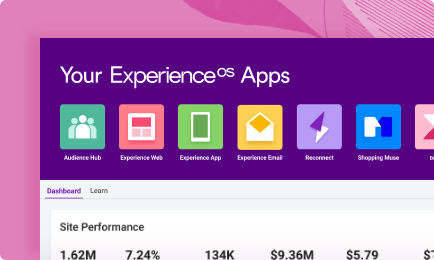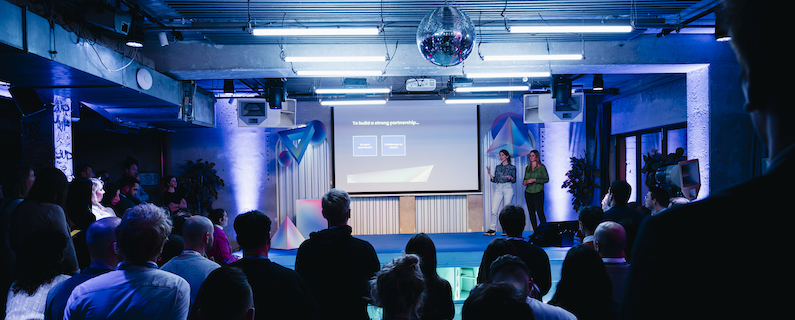Crucial Takeaways from Personalisation Pioneers Singapore 2023
From becoming truly data-driven to working smarter, use the day’s learnings to find your programme’s edge.
On November 1, 2023, CX leaders from across the globe convened at Singapore’s Flower Field Hall, Gardens By The Bay, to highlight and discuss the latest advancements, strategies, and trends in testing and personalisation—a perfect conclusion to this year’s Personalisation Pioneers tour.
If you couldn’t make it to the event, rest assured. We have assembled some of the most valuable takeaways from the day’s content sessions (alongside this key learnings report). As we head into 2024, check the Personalisation Pioneers website for updates on dates and locations in the new year.
1. From engagement-based to empathy-driven personalisation
During his opening keynote, Anoop Vasisht, CRO of Dynamic Yield by Mastercard, captivated the audience with an electrifying message: “Bringing the edge to personalisation.” He emphasised that, despite AI steering the fourth industrial revolution, it can’t replace the vital role of empathy. Personalisation, the cornerstone of delivering valuable and delightful customer experiences, thrives on genuine understanding.
Anoop urged organisations to move beyond the limitations of transaction and even engagement-focused personalisation and delve deeper into their customers’ situations, perspectives, and expectations to deliver genuinely empathetic experiences. This emotional connection, he highlighted, holds the key to anticipating customers’ desires and tailoring experiences to each individual. The ultimate reward? Unwavering customer loyalty that stands the test of time and leads towards the triumphant path in the ever-competitive realm of CX.

2. Blend the proper focus areas and testing criteria
A/B testing can be a powerful tool to improve user experiences and boost revenue. Still, Lydia Chuang, Digital UX Team Leader at IKEA North Asia, emphasises the importance of first understanding your goal – whether optimising conversion rates, enhancing user experiences, or personalising content. Then, decide what you are looking for in a test and what criteria to consider.
Chuang’s method involves addressing pain points, aligning with current business goals, and basing hypotheses on data rather than assumptions. Take IKEA’s example: the team dug deeper instead of mindlessly following recommendations to boost conversion rates through abandonment emails. They realised users abandoned carts not because they disliked the item but because they weren’t ready to buy. This insight led to the creation of abandonment emails that didn’t just remind shoppers about their items but suggested similar options to encourage continued discovery – with send time optimisation based on what they see from the data (e.g. when peak website traffic occurs).

To make their testing programme scalable, IKEA started small, demonstrated positive results, and gained support from other teams (relying heavily on recognition and trust-building). They meticulously planned more extensive changes based on data-driven criteria, ensuring continued success in testing.
3. Work smarter, not harder, with automation
In her keynote, “Leveraging Automation to Unlock Scalability,” Ella Mampusti, Digital Specialist at The Warehouse Group (TWG), emphasised the team’s pursuit of scaling impact through the templatisation and automation of experiences with AI-driven personalisation, which they’ve been able to implement across additional brands and channels.
The goal was to minimise manual curation, asset creation, and content loading, fostering reusability and efficiency across TWG’s platforms. To find what worked, the team extensively A/B tested the many components and strategies on the website to identify what they could automate with existing tools, like variation feeds or machine learning.
Once they found the most impactful changes, they templatised these experiences for repurposing and testing across multiple brands and channels like email. This saved them valuable time and resources and helped them remain customer-centric, facilitating increases in user-oriented KPIs across the company’s many brands.

4. Pretotyping for the right value-adding experience
Gail Schwartz, Senior Product Manager at Castlery, stresses the importance of identifying the most valuable initiatives amidst numerous ideas and customer feedback. Assessing value through multiple lenses, such as ROI, customer experience, and business recognition, is crucial.
To substantiate value estimates efficiently, Schwartz advocates “pretotyping” to validate new feature ideas rapidly. This approach involves minimal investment in time and resources to confirm customer demand. By leveraging existing tools and functionalities, her team assesses the potential success of a feature before significant investment.
For instance, before developing a product finder quiz for online customers, they trialled a quiz-builder tool for a month. By hardcoding the results, they swiftly gauged customer engagement. This low-cost MVP solution took only a couple of hours to implement. With higher-than-expected engagement and add-to-cart rates, they demonstrated to stakeholders the potential for an advanced version integrated with their personalisation engine.

Catch up on this year’s tour.
While this year’s Personalisation Pioneers’ tour has ended, you can review the latest trends, next-level tactics, high-impact use cases and methodologies featured from each 2023 instalment’s recap: Los Angeles, London, NYC, and Berlin. Hope to see you in 2024!















